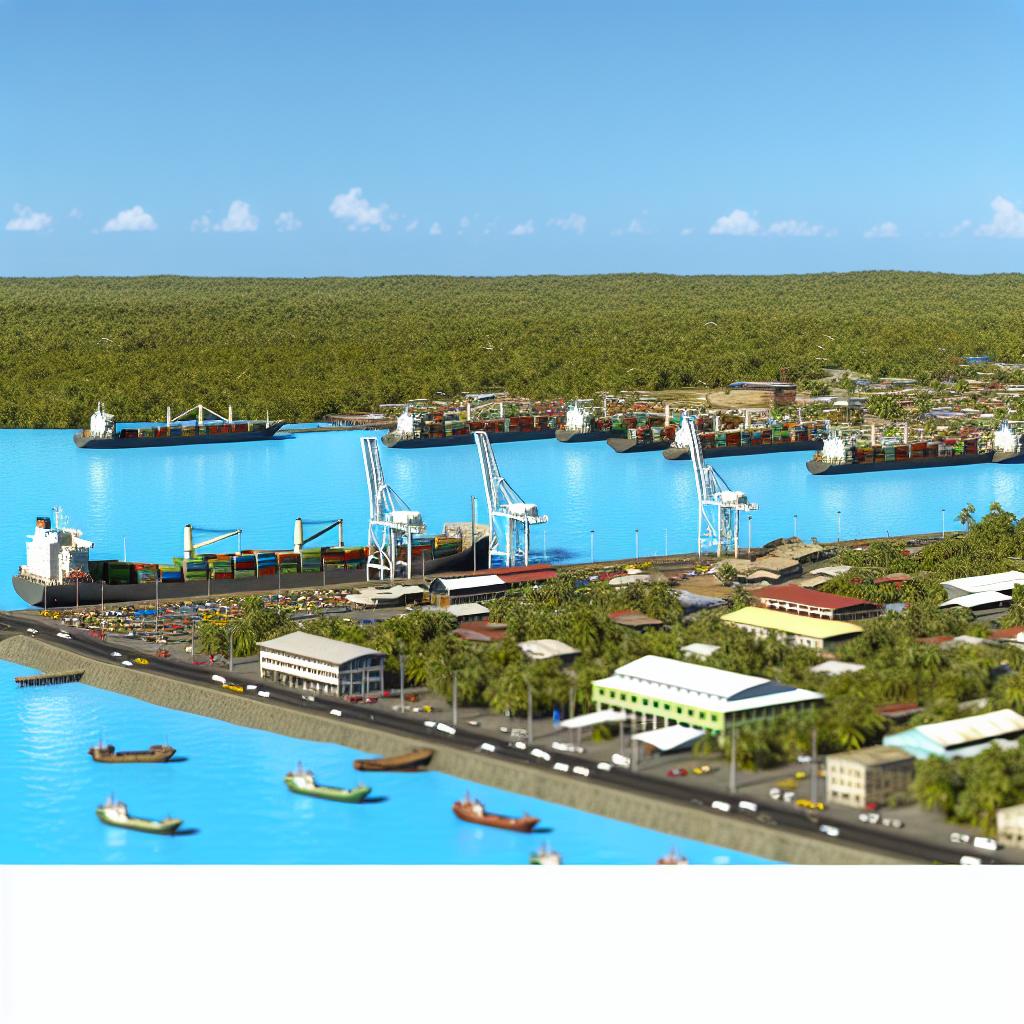Contents
Overview of Puerto Cortés
Puerto Cortés is a significant port city nestled on the northern Caribbean coast of Honduras. Preferred for its strategic position, modern infrastructure, and efficient handling capacity, the city stands out as a crucial pivot in Central America’s maritime trade sector. As a hub of substantial economic activity, it is instrumental in furthering the economic progress of Honduras by facilitating a large portion of the nation’s imports and exports via sea routes.
History and Development
The roots of Puerto Cortés can be traced back to the mid-19th century. Initially a modest colonial outpost, the city’s evolution into a thriving economic powerhouse is a testament to its strategic importance and well-planned development. Over the decades, focused investments in infrastructure have been the key to its transformation, enabling Puerto Cortés to grow into a state-of-the-art port facility that can handle a diverse range of shipments. This steady growth has been driven by both governmental initiatives and private sector contributions, ensuring Puerto Cortés remains relevant in the ever-expanding global trade network.
Infrastructure and Facilities
The city of Puerto Cortés is renowned for its state-of-the-art infrastructure, which plays a critical role in facilitating smooth and efficient cargo handling and storage operations. The port is outfitted with advanced docking terminals capable of accommodating large cargo vessels, thus providing essential support to burgeoning maritime activities. Modern cranes and expansive warehouses are integral components of the port’s infrastructure, ensuring that the movement of goods is seamless and efficient. Additionally, the inclusion of Customs and Border Protection facilities underscores the port’s commitment to safety and regulatory compliance, thus making it a reliable partner in international trade.
Economic Impact
The economic impact of Puerto Cortés extends far beyond its maritime trade operations. It serves as a pivotal node within the logistics chain of Honduras, supporting various key industries like manufacturing and agriculture. By acting as a gateway for imports and exports, Puerto Cortés facilitates commerce with major trading partners from across the globe, including the United States, Europe, and Asia. Its operational efficiency and expansive reach enable it to contribute significantly to the country’s GDP, creating employment opportunities and fostering economic development. The presence of ancillary services such as shipping agencies, freight forwarders, and logistics companies further multiplies the economic benefits attributed to Puerto Cortés.
Future Prospects
The future of Puerto Cortés holds promising prospects, with ongoing plans geared towards fostering continuous growth and innovation. Emphasis is being placed on technological advancements and capacity expansions to maintain the port’s competitive edge. Strategic investments focus on integrating environmental sustainability measures, in response to growing global demands for eco-friendly operations. Such initiatives are expected to enhance the port’s efficiency while aligning with international best practices, thereby bolstering its stature as a leader in maritime trade.
Impact of Earthquakes on Puerto Cortés
Puerto Cortés has not been immune to natural calamities, with earthquakes being a significant threat given its geographical location. The region, nestled along the Caribbean coast, is predisposed to seismic activities. Throughout its history, Puerto Cortés has experienced occasional tremors, which have contributed to both challenges and lessons learned in terms of infrastructure resilience and urban planning.
Seismic Activity and Impact
The seismic activity in Puerto Cortés over the years has underscored the importance of constructing resilient infrastructure capable of withstanding tremors. The city’s proximity to tectonic plate boundaries makes it susceptible to earthquakes, which can disrupt both daily activities and trade operations significantly. Damage to port facilities caused by seismic events can potentially result in delays in the movement of goods, affecting both the local and national economy.
Resilience and Adaptation
In response to these challenges, measures have been implemented to improve the resilience of Puerto Cortés against earthquakes. State-of-the-art engineering practices are now an integral part of the port’s infrastructure development, ensuring that buildings, docking stations, and storage facilities are equipped to endure seismic events. Regular drills and emergency preparedness plans have been instituted to mitigate risks associated with earthquakes, enhancing the safety of inhabitants and workers within the port area.
For insights into the economic dynamics of Honduras, the Country Economy website serves as a valuable resource.
Community Engagement
Aside from structural adaptations, community engagement plays a crucial role in amplifying the resilience of Puerto Cortés. Local authorities have prioritized awareness programs to educate residents and port workers about earthquake preparedness, safety procedures, and immediate response strategies. This collective approach fosters a culture of readiness and resilience, equipping the community to face potential seismic threats effectively and collaboratively.
“`html
The continuous evolution of Puerto Cortés, combined with strategic planning and community involvement, underlines the city’s capacity to thrive in a dynamic global environment while safeguarding the well-being of its residents against the natural adversities that accompany its geographical positioning.
“`
